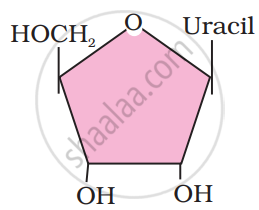Advertisements
Advertisements
Question
Attempt titrating an amino acid against a weak base and discover the number of dissociating ( ionizable ) functional groups in the amino acid.
Solution 1
The existence of different ionic forms of amino acids can be easily understood by the titration curves. The number of dissociating functional group is one in case of neutral and basic amino acids and two in case of acidic amino acids
Solution 2
Titrating a neutral or basic amino acid against a weak base will dissociate only one functional group, whereas titration between acidic amino acid and a weak acid will dissociate two or more functional groups
APPEARS IN
RELATED QUESTIONS
Explain the composition of triglyceride.
Can you attempt building models of biomolecules using commercially available atomic models (Ball and Stick models).
Draw the structure of the amino acid, alanine.
The acid insoluble fraction does not contain
Identify the incorrect statement :
Triglyceride consists of ______.
Identify the structural formula given in the figure.

It is said that elemental composition of living organisms and that of inanimate objects (like earth’s crust) are similar in the sense that all the major elements are present in both. Then what would be the difference between these two groups? Choose a correct answer from among the following:
Many elements are found in living organisms either free or in the form of compounds. Which of the following is not found in living organisms?
Aminoacids, have both an amino group and a carboxyl group in their structure. Which one of the following is an amino acid?
An aminoacid under certain conditions have both positive and negative charges simultaneously in the same molecule. Such a form of aminoacid is called ______.
Write the name of anyone aminoacid, sugar, nucleotide and fatty acid.
Glycine and Alanine are different with respect to one substituent on the α-carbon. What are the other common substituent groups?
What is the difference between a nucleotide and nucleoside? Give two examples of each with their structure.
Describe various forms of lipid with a few examples.
